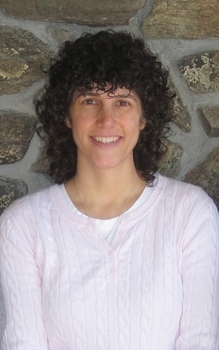Pressure
You might hear all of these terms: "pressure sores", "pressure wounds", and "pressure ulcers". The correct terminology is pressure ulcer and most of our information in terms of terminology and staging comes from the National Pressure Ulcer Advisory Panel (NPUAP). They have lots of resources, some of them are free and some of them are available for a cos. This group along with their international counterpart have come together to create these definitions and these have changed a bit in more recent times. It is important that we are familiar with this because a great deal of wheelchair seating is designed to prevent pressure ulcer development.
Definition
A pressure ulcer is defined as a localized injury to the skin and or the underlying tissue. Usually this occurs over a bony prominence and is the result of pressure or pressure in combination with sheer and/or friction. When a person's body is moving over the seating surface, perhaps during a transfer, this can create shear forces, friction or drag on those tissues as it moves across the seating surface.
Statistics
Depending on where you look for this information you might get a variety of answers. According to one source there is nearly a half million pressure related wounds reported annually among wheelchair users and hospitalized patients. Now this is lumped together so certainly not all of this is due to the wheelchair seating system. A lot of this is due to someone not being adequately moved while they are laying down in hospital beds. The average cost of a hospitalization due to a pressure related wound is nearly $40,000.00. This is an important statistic that we sometimes need to refer to when funding sources are saying, "Well we don't want to pay for this cushion." There is really no cushion out there that costs anywhere near the potential hospital costs and risk to the client.
Contributing Factors
What leads to a pressure ulcer? Well we know from the definition it is pressure. Again, this usually occurs over a bony prominence, and it might be combined with shear. However, there are other contributing factors as well.
Heat and moisture. Whenever we have heat and moisture present on the skin, we have an increased risk of bacteria growth and that bacteria can make the skin more fragile. Many of the seating materials and covers can actually trap heat and moisture. When we are making product selections, this should be a part of our decision making process. We need to look at materials that reduce heat build-up and that keep the skin dry. Cool and dry are optimal.
Poor pressure distribution. This is also a contributing factor. If someone is sitting on a level piece of wood compared to a proper wheelchair cushion, there is certainly more pressure distribution with the cushion. If you are sitting on a piece of wood the bony areas of your pelvis, the ischial tuberosities in particular, are going to be under far more pressure then the rest of your seated surface. By distributing this pressure over a bigger surface, we can reduce this.
Lack of sensation. We typically wiggle around in our seat in response to discomfort. When you go out to the movie theater, you probably change your position quite a bit during that movie because you are not really that comfortable even if you are not always thinking about it. Whereas someone who lacks that sensation may not change their position at all for long periods of time.
Incontinence. This not only introduces moisture that we have already talked about, but urine actually changes the pH of the skin. Fecal matter on top of that changes the pH in such a way that damage can occur to those tissues in an extremely short amount of time. It is not only important to keep the skin dry, but clean as well.
Poor hygiene. This of course can add to that. Many people with disabilities who are using wheelchair seating systems are not getting adequate hygiene and ertainly not as frequent as perhaps you or I. Hygiene may be more necessary if incontinence is an issue.
Poor nutrition. Many people with disabilities also have difficulty getting adequate nutrition and hydration because of either difficulties obtaining those items or not getting enough of that presented to them during the day.
Prior pressure ulcers. Any issues of pressure ulcers in the past makes that skin far more vulnerable to injury, and those tissues underneath as well.
Immobility. This is similar to the lack of sensation. If someone is not moving around, they are not allowing those tissues between the bony prominences and the skin to get re-oxygenated.
Friction and shear. These cause distortion of the tissues as they are moving across the seating service.
Inactivity and decreased mental status. These can both play a role as well as the person may not respond to that sensory cue that a weight shift is needed.
